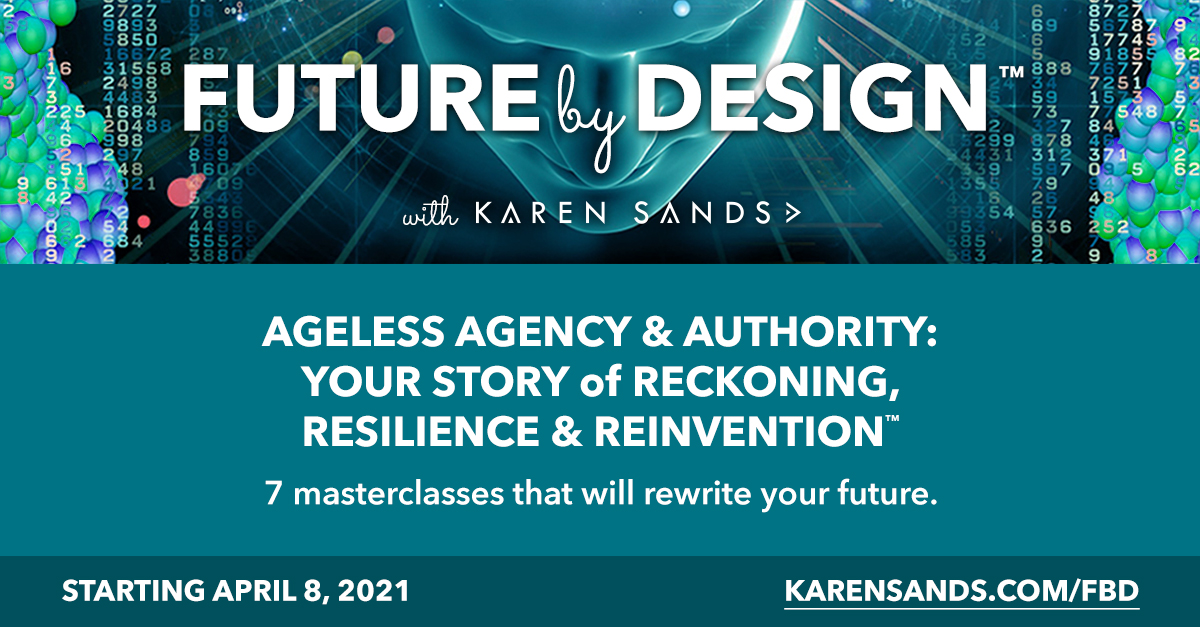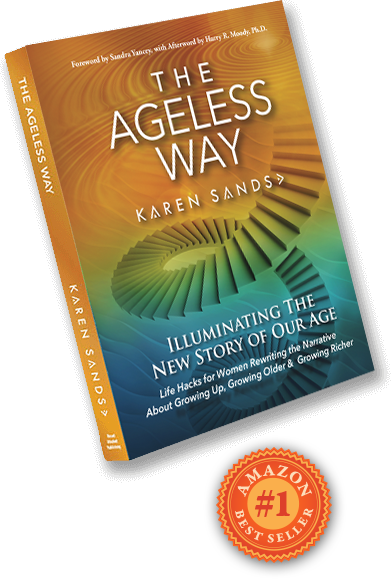In my years of experience, I have found that there are two approaches to both reinvention and to how we age. We have to make a conscious choice in both cases, or we will be thrust into doing so by forces beyond our control. Most of us are brought to this choice point by one or, more likely, a series of major life triggering events. Our choice is either/or. The more commonly selected approach is the more cursory, no-risk, and the surface solution-finding, thereby bypassing the more risky route of transformation. Others, like me, choose to follow the more radical reinvention approach, which takes us on a far deeper dive, or into the “descent” into lasting transformation.

Make no mistake: When I’m talking about reinvention, I’m talking about radical reinvention in which the ultimate goal is transformation. There’s a danger to being too cautious under the guise of being realistic or practical. When a room in your home doesn’t serve you—the space doesn’t work for how you use the room; the furniture is too big, too small, too inappropriate for the task; and the overall atmosphere is too closed, too open, too shabby, too stressful—you have a couple of options. You can rearrange the furniture, maybe throw up a coat of paint, and that will help to a degree in the short term. Or you can knock down some walls, replace the furniture, and completely redesign the decor—basically reinvent the room to serve your purpose, and to serve others who use that room, in every possible way. We face the same choice in our lives, our careers, and especially in our businesses. For example, established and new entrepreneurs faced with globalization, rapidly changing technology, and the seemingly never-ending fallout from the Great Recession and the pandemic can’t simply rearrange our businesses. Restructuring, downsizing, and pinching pennies—these are not enough …when I’m talking about reinvention, I’m talking about radical reinvention in which the ultimate goal is transformation.
We have to transform how we do business, and we have to do it now. In my work over the decades, I have learned that people say they want change, and then they limit their own sense of what changes are possible for them (especially those who’ve “been there, done that”). Focusing solely on rearranging our lives feeds the limitations, sucking us back into the status quo—doing more of the same—rather than inspiring us to climb the summit that takes us beyond what we believe is possible to doing what we never thought we could. We are all different, at various points on the spiral of life. Post-recession, some people by necessity must reenter the workforce or focus on remaining there and, for them, for now, rearranging is absolutely a positive move, a way to improve on the status quo without taking risks they can’t afford to take or simply do not wish to take. But this necessity is a means, not an end, a necessary step on the journey to larger transformation.
To mentally close that door by assuming it is impossible and dangerous to move through is as much a mistake as diving through that door blind and without any preparation. Yes, reinvention carries risk, but closing the door to reinvention is also risky. The risk is not just to the individual, but to our Mother Earth as a whole and the next seven generations who will suffer if enough of us do not collectively strive for anything short of personal and global transformation.
These insightful words shared by Dr. W. Edwards Deming decades ago have kept me on my path ever since: “The first step is transformation of the individual. This transformation is discontinuous. The individual, transformed, will perceive new meaning to life, to events, to numbers, to interactions between people.” These times demand not the “same as before” approaches; these times demand rather new approaches to meet and thrive in the midst of massive creative destruction. Disintegration and reintegration are a necessary part of this evolutionary reinvention now beckoning us into the future. Reinvention is not a myth, although it may require a mythic call for action…our call to greatness…based on the archetypal hero and heroine. We have to transform how we do business, and we have to do it now.
Now is the last chance we get to embrace the gift of turning crises into opportunities. Myths are stories to help us re-story our own journeys. Now Baby Boomers need to re-story both our generational journey from the 1960s and our own individual stories as we move through midlife into our elder years, which each of us traverses and what I call “Crossing the Canyon of the Soul” (Sands, 1997). Not everyone will be called or will answer this call, but those of us who do cannot afford to dismiss it as impossible or even impractical. We all face the same questions, even if our answers may differ.
The right questions are far more important than the answers.








Leave a Reply
You must be logged in to post a comment.